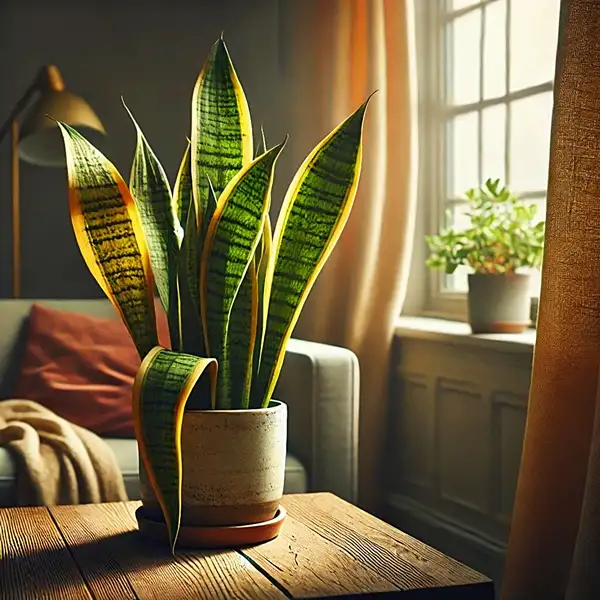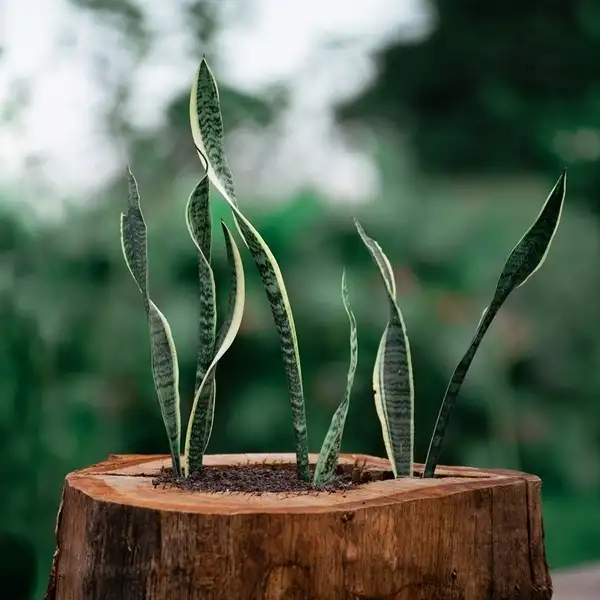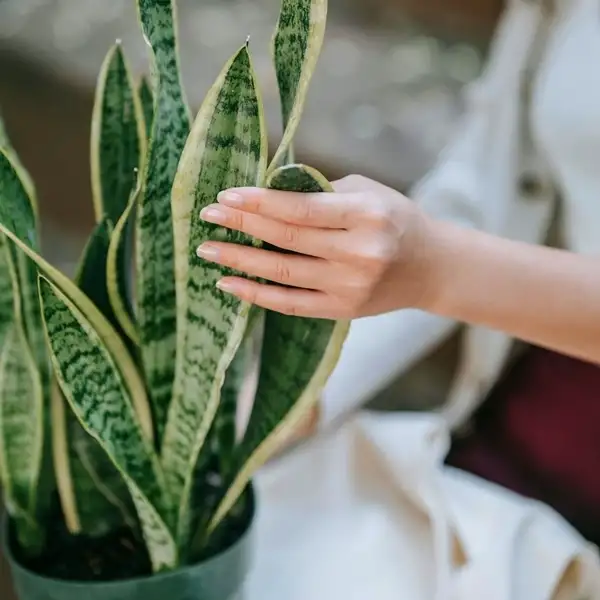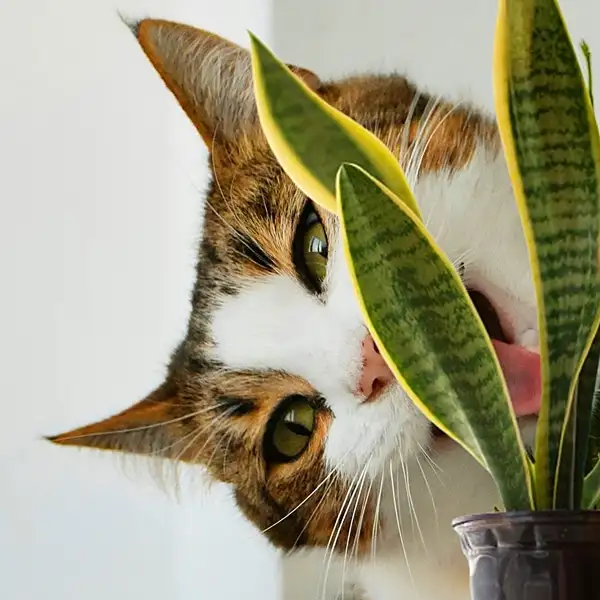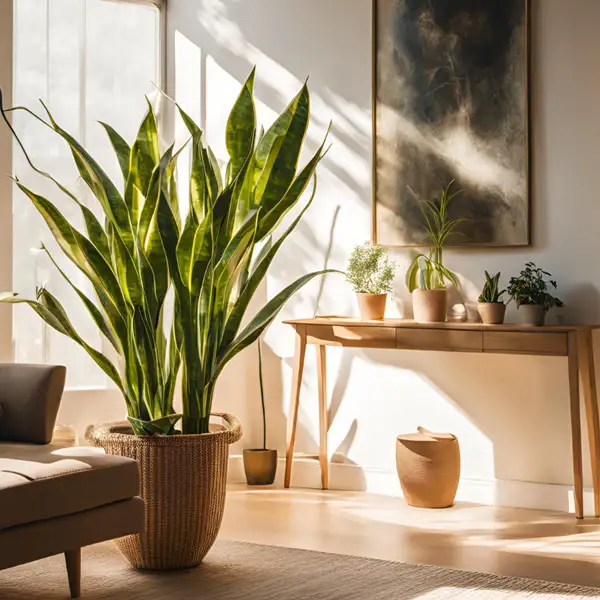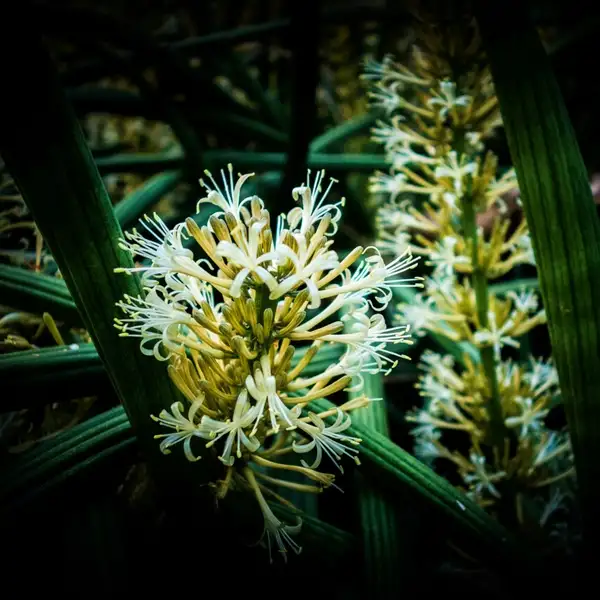Key Takeaways
| Key Takeaways | What You’ll Discover |
|---|---|
| Understanding Snake Plant Care | Unravel the essentials for keeping this plant thriving. |
| Why Leaves Turn Yellow | Thinking, ‘Why is my snake plant turning yellow?’! Not all yellowing is bad—find out what’s normal & what’s not. |
| Major Causes of Yellowing | Several factors contribute to this issue—can you spot the main culprit? |
| Effective Prevention Tips | Simple yet powerful techniques to stop yellowing before it starts. |
| Revival Techniques | Is your plant struggling? Follow these steps to bring it back to life. |
Basics of Snake Plant Care
One winter evening, I received a panicked message from a close friend –
“Hey Maddy, Why is my snake plant turning yellow?”
As a seasoned plant enthusiast, I immediately recognized the urgency and reassured her that we could fix it.
Snake plants also known as Sansevieria or Mother-in-law’s tongue are celebrated for their resilience & low-maintenance requirements. They require minimal attention, thriving in less-than-ideal indoor conditions that would be detrimental to many other houseplants. However, similar to every living thing, they have their vulnerabilities too. When your snake plant begins turning yellow it may become a cause for concern.
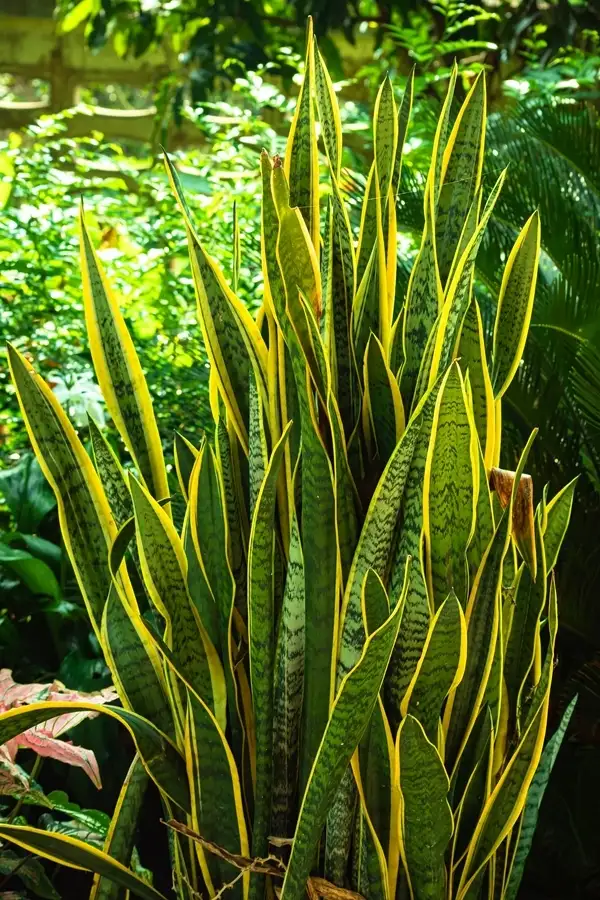
Nevertheless, understanding what constitutes excellent care for these drought-tolerant perennials is paramount. For instance, ensuring they receive adequate light but not direct sunlight which can scorch leaves, using well-drained soil & regulating watering because they are susceptible to overwatering more than under-watering.
Proper care entails maintaining favorable conditions that mirror their natural arid habitats. Temperature ranges between 70°F to 90°F (21°C to 32°C) during day while slightly cooler at night usually ranks as optimal conditions alongside regular dusting of the leaves with a soft cloth to promote better absorption of light.
5 Causes of Yellowing in Snake Plants
The first step towards rectifying a problem lies within correctly determining its root cause – a principle applicable when handling yellowing snake plants as well.
Recognizing symptoms early fortifies proactive action in rescuing your troubled snake plant.
Normal Aging & How To Detect It
Yellow leaves could result from normal aging since older leaves tend to yellow and then die off to allow newer ones space to grow.
If you observe this process affecting only one or few isolated old leaves at a time it might not pose any serious issue – a good rule of thumb is that only the lower/outermost leaf begins this process first when aging naturally.
4 Critical Reasons for Snake Plants Turning Yellow
However pervasive discoloration often signals more serious concerns including –
| Cause | Description | Reference |
|---|---|---|
| Overwatering |
|
The Spruce |
| Inadequate Lighting |
|
The Spruce |
| Temperature Stress |
|
Gardens Whisper |
| Nutrient Deficiency |
|
Tiny Garden Habit |
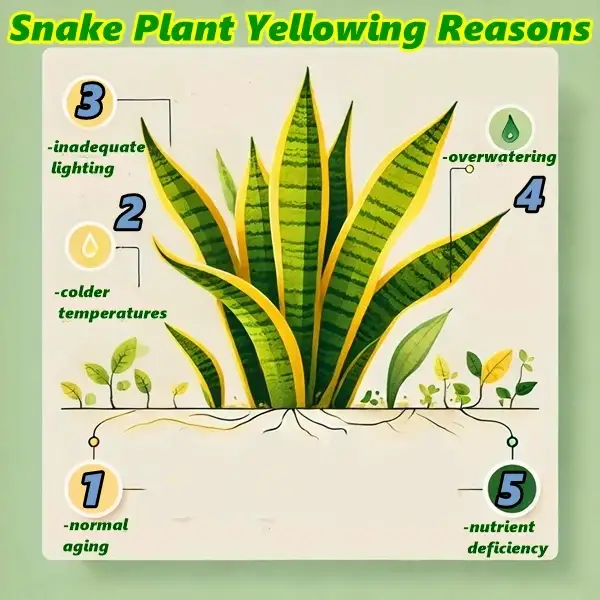
Overwatering – A Major Threat to Snake Plant’s Health

Snake plants, like many other succulents, naturally conserve water and are quite sensitive to overwatering. Structurally the roots store a lot of water and for long periods – a survival technique in their native West African semi-desert environments.
‘In fact, over-watering is the most common reason snake plants die,’ says horticulturist Barbara Pleasant in ‘The Complete Houseplant Survival Manual.’
Lisa Eldred Steinkopf, a garden expert & writer, also emphasizes that overwatering is one of the biggest mistakes in nurturing snake plants in her book ‘Houseplants: The Complete Guide to Choosing, Growing, and Caring for Indoor Plants.’
Waterlogged soil causes the roots to suffocate leading eventually start rotting. The rot can then spread upwards leading to general yellowing and then browning. Steinkopf recommends watering every 2-6 weeks depending on seasonality changes – significantly less during colder months when growth slows down.
Lighting Conditions & Their Effects on Snake Plant Coloration
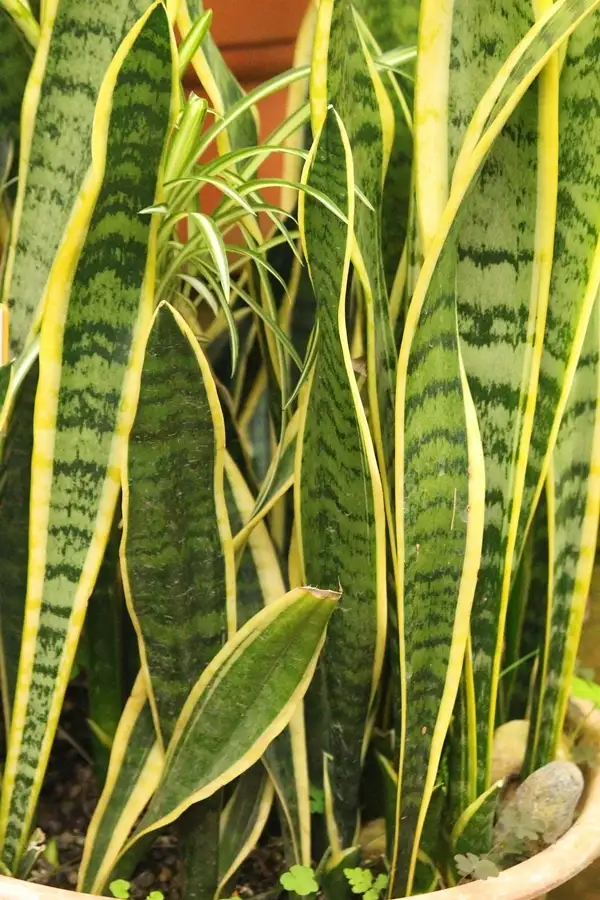
Another culprit behind your snake plant turning yellow could be lighting conditions. They’re one of those admittedly rare indoor plants that flexibly adapt across the spectrum from low light areas all the way towards bright indirect light areas!
However, subjecting them to direct sunlight could result in sunburn which might explain leaf discoloration or off-color pale-green hues replacing vibrant dark-green looks instead.
Proper Soil Composition for Healthy Snake Plants
The essence of proper soil composition shouldn’t be overlooked since it directly affects how well your snake plant grows, retains color vibrancy, and has overall health resilience against diseases or pests.
Best Soil Mix
A loose well-draining soil mix incorporating ingredients such as perlite sandy mixes or even cactus potting mix works wonders! This would prevent any potential root rot resulting from excessive moisture retention often detrimental for these desert natives as previously elaborated upon above.
4 Expert Tips To Prevent Yellowing or Revive A Snake Plant
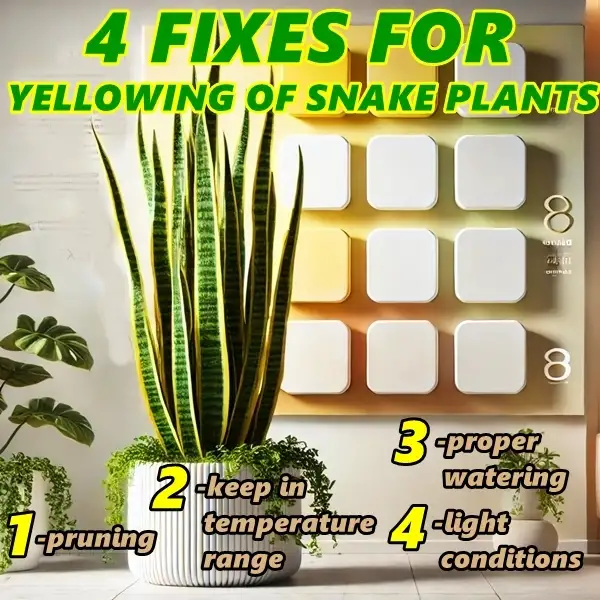
If properly diagnosed and managed early enough, the chances of rescuing an ailing snake plant increase significantly!
| Tip | Action | Reference |
|---|---|---|
| Proper Watering Practices |
|
The Spruce |
| Optimal Lighting Conditions |
|
The Spruce |
| Maintain Ideal Temperature |
|
Gardens Whisper |
| Regular Fertilization |
|
Tiny Garden Habit |
Be Proactive – Save Your Snake Plant!
In conclusion, as long as you practice due diligence in maintaining favorable conditions mimicking their native habitats & proactive measures against routine care problems like over-watering, your snake plants should remain healthy & vibrant for years to come!
Frequently Asked Questions
Will a yellow snake plant turn green again?
No! Once leaves turn yellow, they won’t turn green again. Address the root cause to ensure new growth stays healthy.
Why is my snake plant turning brown?
Overwatering, poor drainage or extreme temperatures cause browning. Avoid direct sunlight for long periods & prevent water buildup in soil.
Why is my snake plant turning yellow after repotting?
It may be experiencing transplant shock, improper watering or poor soil conditions. Keep conditions stable & avoid overwatering.
Why is my snake plant turning yellow at the bottom?
Aging leaves naturally yellow & die off. If multiple lower leaves are affected, check for overwatering or poor drainage.


